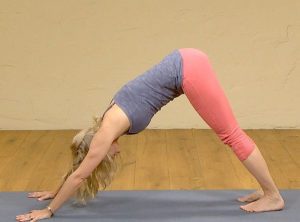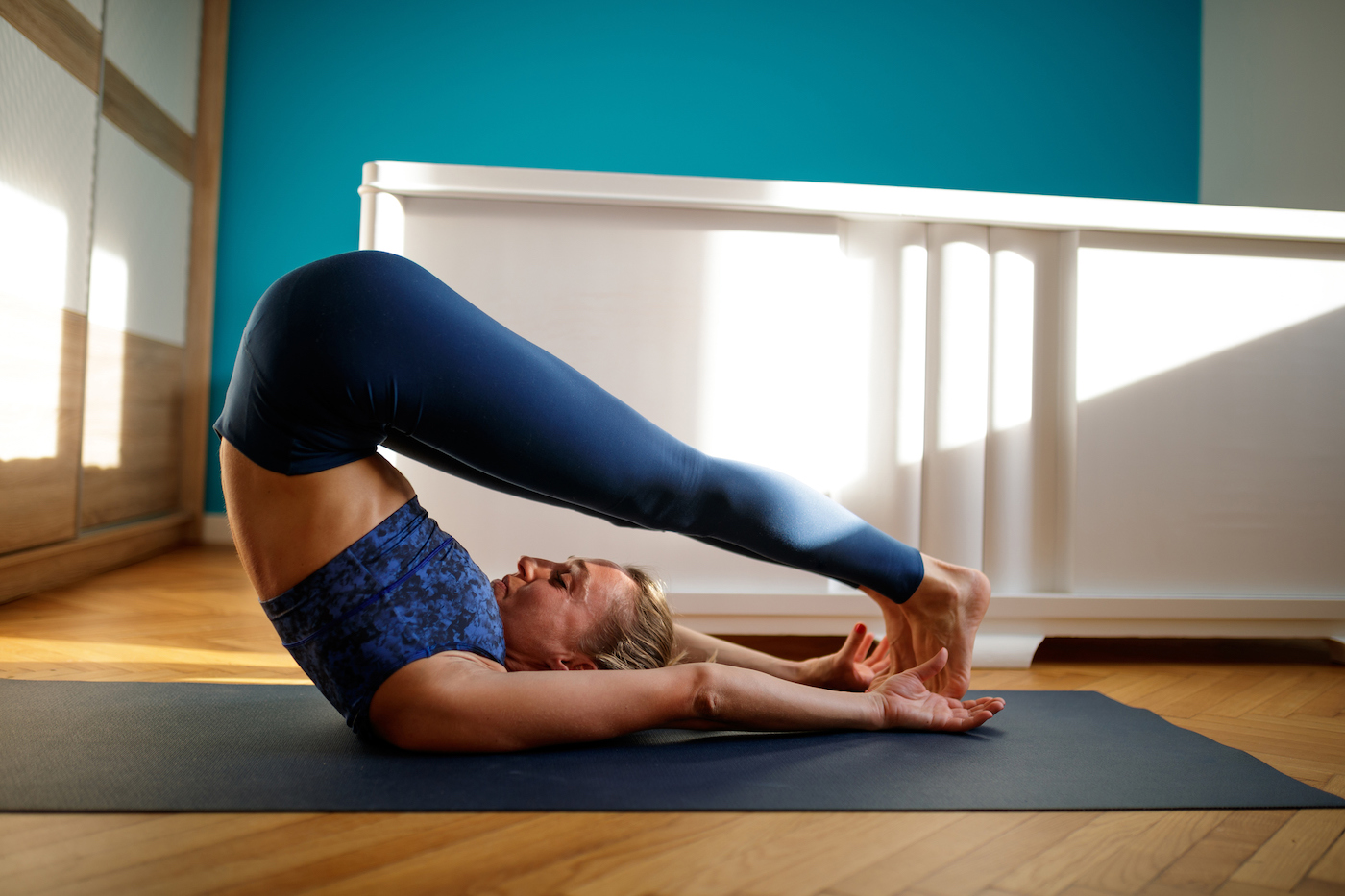
Yoga isn't only for skinny girls. Yoga helps reduce stress, improves your waist circumference and reduces your body's percentage of fat. It's a great exercise to improve self-esteem and get in shape. Learn more if you are a fat girl and want to try yoga.
Reduces stress
Research has shown yoga can be helpful in treating abdominal obesity. Yoga has been shown in overweight and obese women to decrease waist circumference, improve body weight, and increase anthropometric measurements. It boosts self-esteem as well as reduces stress. This is one of the reasons why yoga is recommended for overweight and obese women.
Yoga can be difficult for some, but it can also prove to be very beneficial. Yoga is meant to decrease stress and anxiety. It's best to practice it in a place that is comfortable. It is possible to practice in your underwear, or even sweatpants. You can also practice in a room with warm temperatures. Don't set unrealistic expectations of yourself. Avoid setting unrealistic expectations. The primary goal of yoga should be to relieve anxiety.
Reduces waist circumference
A new study shows that yoga can help reduce the waist circumference for obese and overweight women. The study was designed to measure the effects of yoga on abdominal obesity and other anthropometric measures. The study also showed that participants felt better about their mental health, self-esteem, and overall well-being. While the results of this study are preliminary, they have promising clinical implications.

The study consisted of a combination physical activity, yoga-based diet advice, as well as psychological elements. The results showed that the average waist circumference for those in the yoga program was reduced by 5%. Two people saw a decrease of more than 10%. These results are still being confirmed by further studies.
Reduces body weight
A 12-week yoga intervention for obese young girls resulted in a significant reduction in waist circumference, waist to hip ratio, and overall body fat. It also led to an increase in self-esteem, physical well-being, and perceived stress. The yoga intervention also improved participants' mental, and emotional well-being. The results show that yoga can reduce abdominal obesity in girls with a history of emotional eating or obesity.
Yoga can help you become more aware of your body and breath, which is one of the many benefits for weight loss. Yoga helps to reduce stress eating and emotional eating. Both of these can lead both to weight gain and binging. It encourages healthier eating habits.
Reduces percentage of body fat
The study was designed to examine whether yoga for obese girls could decrease body fat. The study involved two groups of participants. One group was assigned to a yoga class daily, and the other group was assigned to a gym class daily. Yoga exercises helped reduce body fat and improve brain function. This made it easier for participants to control stress levels and make healthier food choices.
The National Institutes of Health funded this study. It included a restorative exercise (on the floor, with props) called restorative Yoga. It found that women who practiced restorative yoga burned 2% more body fat than those who practiced traditional stretching exercises. According to another study, yoga-practicing obese men lost four pounds in just 10 days according to the Journal of Alternative Medicine.

Reduce waist-hip ratio
The waist-to–hip ratio can be a more accurate indicator of a person’s health than just weight and BMI. If your waist is too big compared to your hips, you need to make some lifestyle changes. The doctor can help you determine the waist-to/hip ratio. You can also measure at home. Measure your waist circumference at the navel. Once you have that measurement, measure your hips, starting from their widest part.
A higher waist-to–hip ratio can mean you have more body fat, which can increase your risk for developing heart disease or diabetes. You must eat healthy, exercise regularly, and eat enough. Your doctor should be consulted to help you create a meal program that will help you shed fat and keep it off.
FAQ
What are the main differences between Hatha (ashtanga), Vinyasa (power yoga), Kripalu, Bikram and others? ?
There are many styles of yoga. Each one offers a different way to find balance in our lives.
The most popular types of yoga are:
Hatha - This involves stretching and poses that focus on core strength and flexibility.
Ashtanga - This focuses on slow-paced movements that build strength and stamina.
Vinyasa - This type of yoga incorporates fast-flowing sequences that allow you to breathe deeply.
Power - Power yoga is a form of power that involves more challenging moves.
Kripla - This is one of the oldest forms of yoga that dates back thousands of years.
Bikram – This type of yoga can be done in heated rooms.
I do already engage in some type of physical activity. Is yoga still a good option?
Yes! Yoga can help you train even if your physical activity is not too high. Combining yoga with other exercise such as running, biking, swimming or lifting weights will yield greater results.
This is because yoga helps you focus on proper breathing techniques, which help you burn calories faster.
Additionally, it can increase your endurance level. You can reap the many benefits of yoga no matter how advanced or beginner you are.
What foods should you avoid after doing yoga?
Your energy levels may be affected by avoiding certain foods. It may also cause you to feel bloated or have stomach cramps. You may feel tired after practice.
What are the health benefits of yoga?
Yoga originated in India and is an ancient form of meditation. It was developed by Hindu monks over many centuries to improve mental and physical health. Many people use yoga for relaxation and stress relief. Some people believe that yoga improves strength and flexibility.
Yoga helps improve balance and coordination. Yoga is also great for seniors who want an active lifestyle. It can prevent injuries from falling or other causes.
Yoga strengthens your cardiovascular system, which is why it's good for your heart. This is especially helpful for those who are obese, have high blood sugar, or have diabetes.
Yoga has been shown to help reduce stress, anxiety depression, insomnia, and other symptoms. These conditions often lead to chronic pain, so practicing yoga may be especially beneficial for those with arthritis and fibromyalgia.
As you get older, your muscles naturally lose some elasticity. But yoga keeps your muscles flexible and strong. As you get older, you'll notice that yoga increases your energy and stamina.
According to the National Institute on Aging, regular yoga can reduce depression symptoms such as fatigue and feelings depressed. The institute also reports that yoga can help lower cholesterol levels and increase bone density.
Yoga can also relieve headaches, back pain, and other issues. Yoga's gentle pace and slow movements make it a great choice for relieving muscle spasms.
Statistics
- Start your Fall off right with 20% off All Access Membership when you sign up by 9/25! (corepoweryoga.com)
- The American Psychological Association recently shared that 84% of American adults feel the impact of prolonged stress (5). (healthline.com)
- Gentle yoga has been shown to ease some of the discomforts of tender, swollen joints for people with arthritis, according to a Johns Hopkins review of 11 recent studies. (hopkinsmedicine.org)
- A 2020 review of 27 studies (1,805 total participants) of yoga interventions in children or adolescents found reductions in anxiety or depression in 70 percent of the studies, with more promising results for anxiety. (nccih.nih.gov)
- The people in the yoga group were 37 percent more likely to have quit smoking by the end of the 8-week program. (nccih.nih.gov)
External Links
How To
Can I do yoga during pregnancy?
You may not be able to perform certain poses safely if you are pregnant. Before beginning a new exercise routine, it is advisable to consult your doctor.
There are still many poses that you can do during pregnancy. These are some tips to help you get started:
-
It is not a good idea to lift heavier than shoulder-level weights for pregnant women. Instead, use lightweight resistance bands or dumbbells.
-
Avoid deep twists, as these could put pressure on your belly.
-
Avoid backbends up until you have your baby. This can place excessive strain on the lower back.
-
To deliver your baby safely, you should not be seated cross-legged or lying on your stomach.
-
You should not attempt to invert poses such as handstands or headstands without your doctor's approval.
-
Limit your practice to 30 minutes per day.
Yoga can be continued throughout pregnancy if you are ready. Your doctor can help you decide when it's time to start practicing yoga.